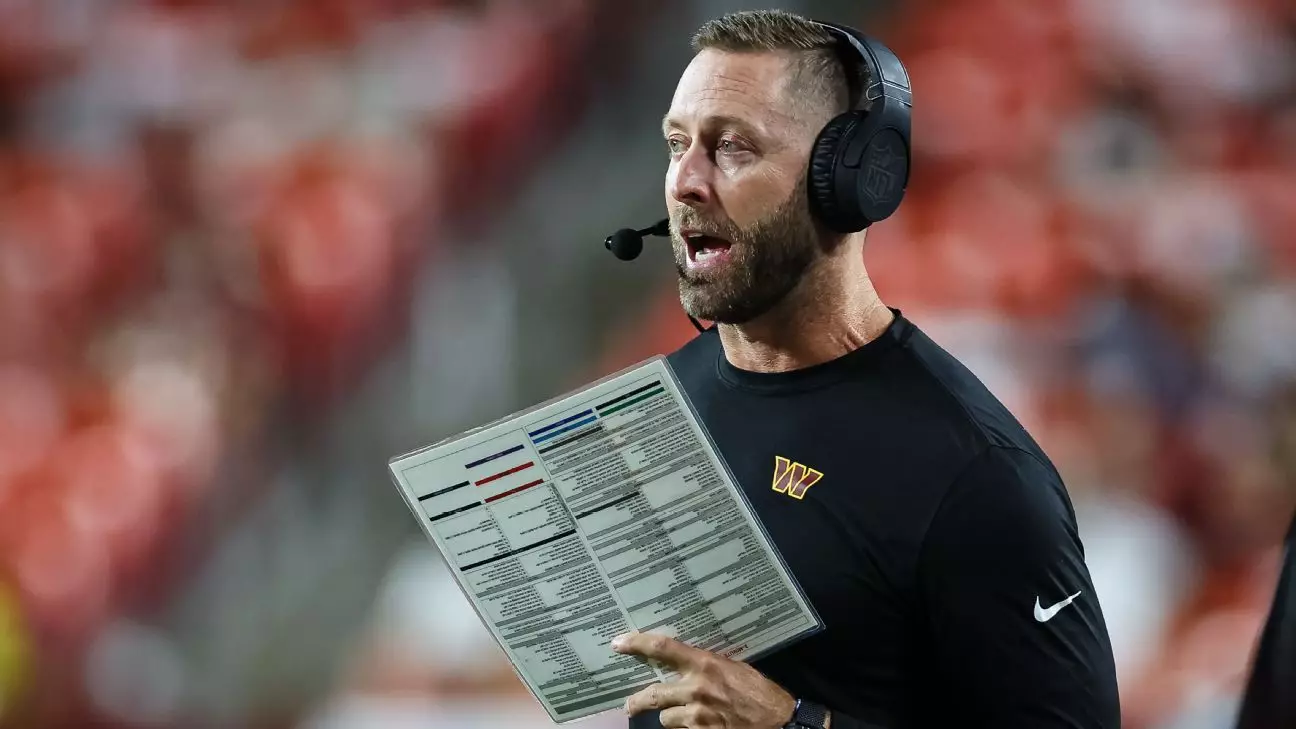The Washington Commanders face an uphill battle as they gear up for their upcoming season, with their offense failing to hit the marks set by recent standards. Scrutinizing their summer performance reveals more than just a poor stretch of practice sessions; it exposes fundamental issues related to team cohesion, injury setbacks, and the challenge of integrating new talent. While the talent pool appears promising on paper, the lack of consistent on-field collaboration is creating a disconnect that may hinder their potency when the games truly matter.
The core obstacle is the absence of key players, especially star receiver Terry McLaurin. Despite being present in practices, McLaurin has primarily worked with trainers rather than engaging in full-contact drills. This kind of incomplete participation hampers the development of crucial timing and rapport with quarterback Jayden Daniels, despite last season’s impressive connection. The impact of missing out on crucial reps is evident; football is a game deeply rooted in rhythm, and chances for that to flourish are dwindling when players can’t practice together. The same applies to other offensive starters dealing with injuries or holdouts, which collectively stifles team chemistry just weeks before the season begins.
This scenario demonstrates how vital continuity and full engagement are to a cohesive offensive system. Teams that neglect these factors risk entering the season with untested lineups and underdeveloped chemistry, which could translate into sluggish performance when competitive pressures get intense. It underscores the importance of preserving player availability and fostering battle-tested partnerships, especially in a league where precision and timing often define success.
Injuries and Fractured Relationships: The Long Road to Synchronization
A significant contributor to theater of the unseen battles is the injury bug. The Commanders are grappling with a host of issues: Sam Cosmi recovering from a torn ACL, Brandon Coleman nursing injuries, and Noah Brown sidelined with a knee issue. These setbacks aren’t merely physical; they are strategic blows, undermining the team’s ability to gel early in camp. When core players are restricted, the offense’s fluidity and dynamics are compromised, limiting the coaching staff’s ability to evaluate how well the pieces fit together.
The absence of precision starters creates a domino effect. For instance, without a full-strength offensive line, pass protection falters, limiting Daniels’ ability to execute plays effectively. Similarly, missing key receivers means less opportunity to develop a high-volume target and quarterback rapport, especially considering the importance of timing routes. The situation exemplifies how injury misfortunes can stymie the natural growth and camaraderie emerging from repetitious practice sessions, thus impeding the offense’s evolution.
Moreover, absences like McLaurin’s holdout and injuries push the team to rely on less experienced players, which in turn raises questions about depth and readiness. How well the team adapts in the coming weeks will be the true test of their resilience. Historically, teams that navigate such hurdles often emerge stronger once their core personnel is available and integrated. However, this requires meticulous planning, patience from coaching staff, and an understanding that chemistry is cultivated over time—something that cannot be hurried.
The Need for Strategic Patience and Smart Reintegration
While the summer struggles are evident, there exists a silver lining rooted in the potential of players like Daniels and McLaurin. Despite the setbacks, Daniels’ impressive performance last season, especially when thrown to McLaurin, signals that the offensive foundation—the quarterback-receiver relationship—has a base on which to build. Nonetheless, Kingsbury’s emphasis on “time on task” highlights that progress is a process, not an overnight phenomenon.
The challenge for the Commanders is balancing patience with urgency. The upcoming weeks are critical in determining whether they can forge the cohesion needed to compete effectively. It involves not just waiting for injured players to return, but also ensuring that the lesser-experienced personnel absorb the necessary knowledge and develop chemistry quickly. The coaching staff’s ability to innovate with what is available—perhaps through scheming adjustments or rotation strategies—will be instrumental in overcoming current deficiencies.
In a league increasingly dependent on high-powered offenses, the Commanders must understand that their ultimate success hinges on more than just acquiring star talent; it involves cultivating unity, resilience, and adaptability. If they can navigate these summer hurdles efficiently, they have the talent to surprise observers and competitors alike. But if injuries and absences continue to dominate their preparation cycle, the path to offensive synchronization remains an arduous journey, full of obstacles that could define their season before it even begins.

